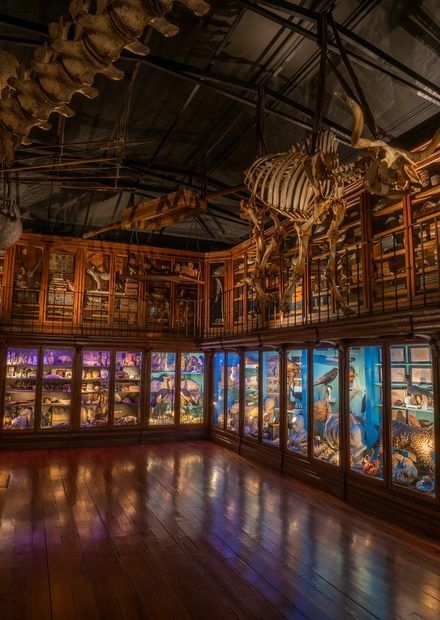When a single space reunites a literary treasure beyond compare and the opulence of early 17th century architecture and arts, the result is one of the most spectacular and original European libraries in Baroque style. At Joanine Library, there are worlds inside worlds, inside worlds; here, everything is knowledge and art invites you to discovery. There are thousands of works which lay upon a lavish space full of beauty and exoticism, where the richness of the painted ceilings is in harmony with the balustrades and shelves made of golden leaves and wood from the tropics. Enjoy the scholar knowledge of this bounded treasures here protected by the magnificence of the Joanine Baroque style.
The Work of King John V
The Joanine Library at Coimbra University, which replaced the old University Book House, owes its name to the monarch who ordered its building in 1717. King John V, the Magnanimous, became known as a great patron of culture, science and arts and this library is a remarkable testimony of the King’s cultural policy.
In the portico of the elegant building with four ionic columns, the majestic royal coat of arms in Baroque style stands out, displaying a spirit of magnificence which characterized the most auspicious reign in the History of Portugal.
In this three stores building, two of which are underground, the walls, covered in bookshelves, keep thousands of volumes, especially about Medicine, Geography, History, Humanist Studies, Science, Civil and Canon Law, Philosophy and Theology works.
Time proof Architecture and Decoration
Books published between the 15th and 19th centuries included in the library’s collection are still in good condition thanks to the characteristics of the building. With outside walls 2,11 meters thick, a door made of teak wood and the interior covered with wood in order to absorb the excess of humidity, this space works as a true vault favouring book conservation.
At the library, three rooms stand out. They are connected with each other by decorated arches and completely covered with book shelves topped by the royal coat of arms: in the first room, gold contrasts against a green background; in the second, the golden colour contrasts against a red background and, in the last, a black background makes golden details come to life. Their walls are covered with two-level bookshelves made in exotic, golden and multi-coloured wood, and the celling which cover the space, painted by Simões Ribeiro and Vicente Nunes, shows figures inspired by the arts and science. They are crowned at the centre by the figure of the Divina Sapientia.
Curiosities regarding the Joanine Library:
- At night, after the library is closed, a bat colony helps maintaining the books by eating bugs. The tables are covered with furs in order to protect them from their excrements.
- At the library’s vault there are extremely rare volumes such as the first edition of “Os Lusíadas”, a Hebrew Bible, published in the second half of the 15th century and of which there are only about 20 copies around the world, and even a 48-line Latin Bible, printed in 1462 by two Gutenberg partners and which is considered the most beautiful out of the four which were printed.
- The Joanine Library was built on top of a medieval prison, which was later turned into an academic prison and today it is still possible to reach the basement areas as well as visit them.
Visits
Daily
- Biblioteca Joanina: 09:40 - 13:00 and 14:00 - 17:00 (last entry at 16:40);
- Chapel: 09:00 - 12:00 | 13:00 - 16:45;
- Royal Palace: 09:00 - 12:00 | 13:00 - 16:45;
- Law faculty shop: 09:00 - 12:00 and 13:00 - 16:45;
- Ticket Office: 09:00 - 17:00;
- New shop: 09:00 - 12:00 and 13:00 - 16:45;
- Science Museum (Chemical Laboratory, Cabinet of Curiosities and Jesus College) - 09:00 - 12:00 and 13:00 - 17:00.

























